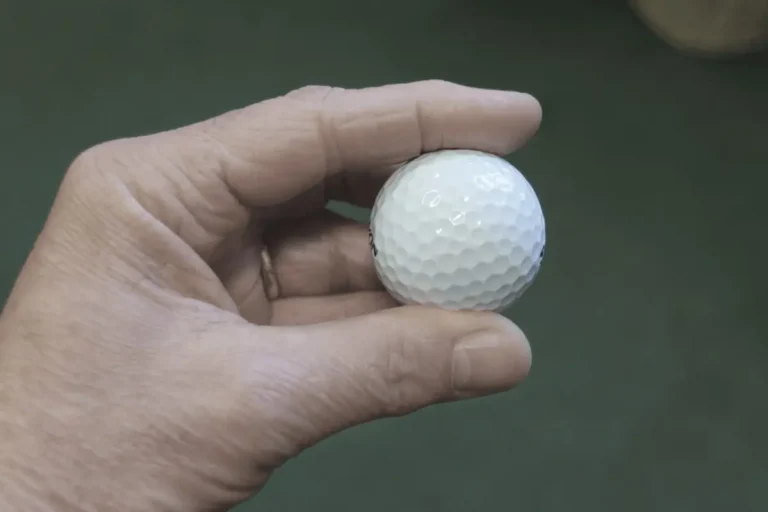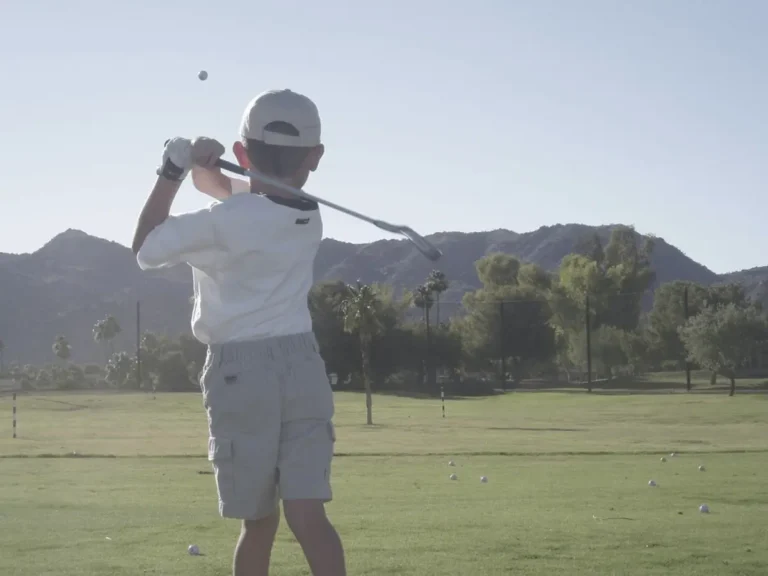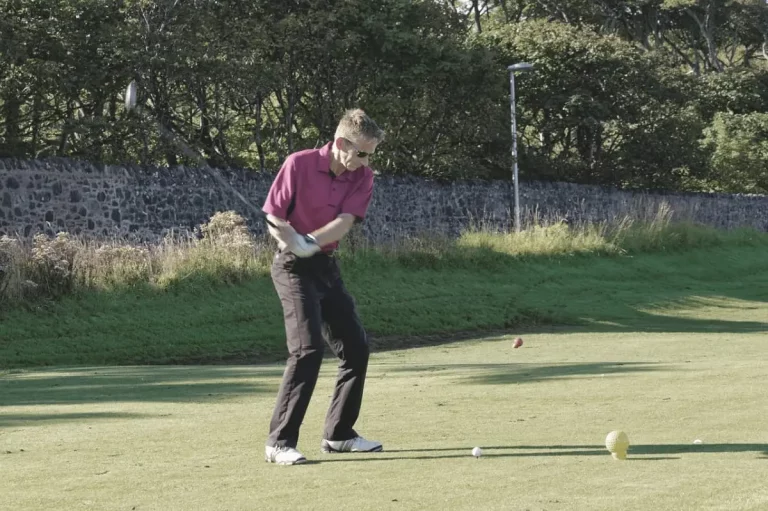top 5 Best Practice Golf Balls – take yourself to the next level
Although golf might look easy when observed from afar, it isn’t a simple game. It requires coordination and technique to achieve the perfect strike. Something that only comes with training.
Golfers don’t usually use regular balls to sharpen their skills; they invest in training models. Here is our selection of the five best practice golf balls:
- PrideSports Practice Golf Balls
- Callaway HX Practice Golf Balls
- BirdieBall Practice Golf Balls
- Faswin 50 Pack Golf Training Balls
- Dsmile Practice Golf Balls
What Is a Practice Golf Ball?
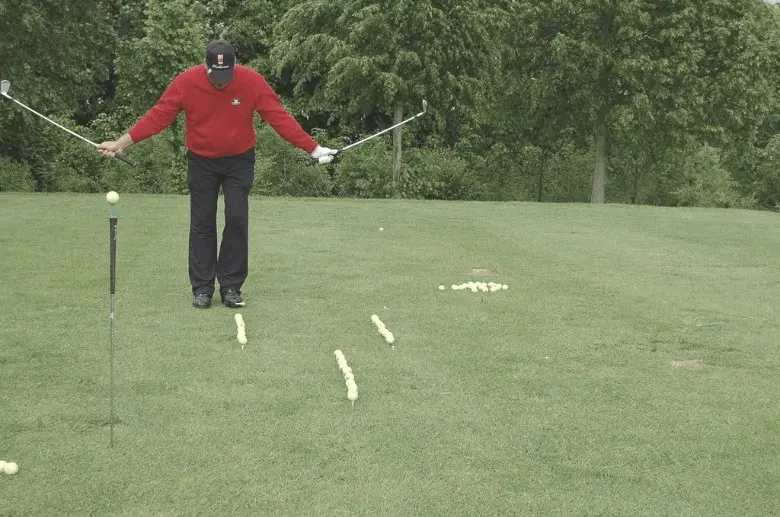
Standard golf balls are used when playing on the course. But training often occurs outside this setting. Especially in winter when the weather makes golfing outdoors uncomfortable and more challenging.
Practice balls are convenient to use in a backyard or garden. Soft models are even suitable indoors or with a golf simulator.
Real Versus Practice Balls
If you’re wondering what makes practice balls different, here are a few distinctions:
Shorter Distance
Training can happen both inside or outside. Either way, you’ll have less space than on a golf course. For this reason, most practice balls have a shorter flight than real ones.
Budget-Friendly
Golf balls are designed with optimum performance in mind and can be costly. Besides, if you’d like to perfect your swing, you’ll need to hit many of them. Purchasing several real sets can become heavy on your finances.
Training balls are more economical and some even come in sets of 50 balls. If you keep sending them to the woods (or the neighbors’ place) and can’t retrieve them, you won’t impact your wallet too badly.
Lighter and Softer
Practice balls are also lighter and softer than regular ones. So you shouldn’t have to worry about misdirected hits. These balls are ideal for home training, including around pets and kids. Besides, foam models won’t leave dents or marks on furniture.
The Best Practice Golf Balls: Factors to Consider
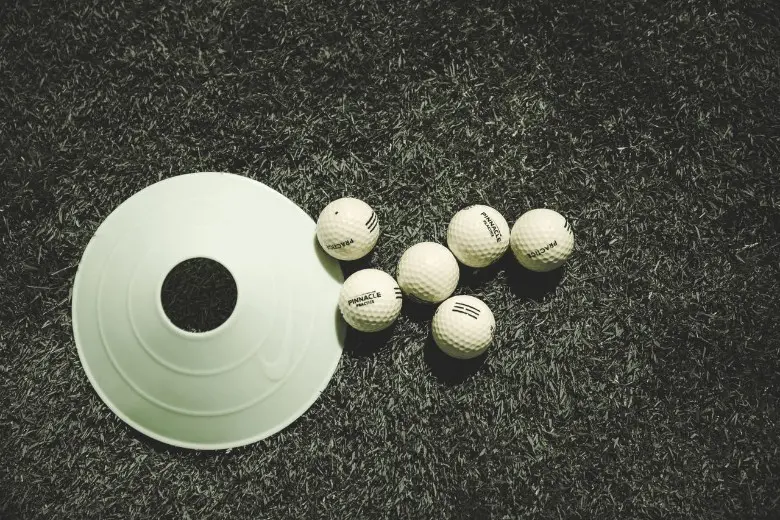
Practice balls come with various qualities and performance levels. Here are some key elements to consider:
- Plastic or foam?
- Shape and design
- Cost-efficiency
Plastic Versus Foam Balls
Plastic Practice Balls
These models are made of hard plastic. When striking, they feel similar to hard balls. Although they can crack and get damaged faster than foam models, they do spin faster and reach further.
Foam Practice Balls
If you golf with low compression balls, you’re familiar with the soft feeling and material. Some foam models even feature a compressed core for better results. If you’re afraid to hit delicate objects or people, this material might be the way to go.
Foam golf balls are also ideal when living nearby a body of water. They’ll float and are easy to rescue.
High-quality products (such as Almost golf balls) can even feel and sound exactly like real ones. Low-quality foam, on the other hand, can deform over time, impacting your shot and training. Although they’re generally more expensive than plastic, they last longer.
Shape and Design
Many training models come in a regular golf ball shape with dimples for better efficiency. Other models are a bit more creative though.
Some unique designs include cylindrical ring shapes. You’ll also find hallowed, rounded balls with tiny holes for better airflow.
Cost-Efficiency
Cost is an essential factor to consider when purchasing golf balls for training. Besides, if you don’t want to continuously run after the balls, you need more than a regular 12-ball pack!
Bear in mind that you may lose a few of them when practicing in an open space, such as the park. At best, they’ll get damaged or cracked as you keep striking.
For beginners, economical balls are a great option. But if you’re an experienced golfer, investing in high-end practice models offers similar results and feel as striking a real ball.
What About Used Practice Balls?
If you’re looking for an alternative between regular golf balls and inexpensive practice models, here are a few options.
Second-Hand Balls
Lost balls found in or around a golf course can also be a great option for training. You might need to give them a quick wash, but the process is fast and straightforward.
Lake Balls
Divers usually retrieve lake balls from water, be it lakes or ponds. They’re then washed and tested before being sold to consumers at a fraction of the price.
Yet, there are a few factors to consider. First, the quality of these balls depends on the center that recycles them. Choose a company with expertise in the field.
And remember that most golfers report water submersion can significantly impact distance. Keep this in mind if you want to improve your reach.
X-Out Golf Balls

These balls aren’t “used” per se. They’re brand new, but don’t meet the manufacturer’s requirements. X-out products are then offered with an impressive discount, even if they’re only slightly scratched or misprinted. Nevertheless, these balls often maintain the same performance as branded ones.
Reviews of the Best Practice Golf Balls
All practice balls claim to be the best. But based on our expertise and assessment, here are the models that made it to our final selection.
1. PrideSports Practice Golf Balls

If you’re looking to practice indoors or in your garden, this pack of 12 foam balls should do the trick.
Users note there isn’t a hard center. They also say they can strike against a garage door or drywall without causing dents. This product is a good option if you have kids around, and they’re also ideal for children getting started on their first strikes.
When training outdoors, this model comes with a few perks. First, the bright yellow color is highly visible. Even if they offer great value, finding your balls after a game is always best.
In addition, owners love that these balls float. You won’t have to worry about practicing beside a body of water.
Pros:
- Bright yellow color
- Can be used both indoors and outdoors
- Soft foam, safe for furniture and around kids
- Floats on water
- Dimple design for further reach
Cons:
- Reviewers mention these balls tend to fly low
2. Callaway HX Practice Golf Balls

These foam balls are both durable and designed to mimic a regular model. They also travel further than most practice balls (100 to 125 yards). For best results, there’s even a dimple design.
Users appreciate how light they are at just 10 grams. You could practice safely inside the home or in a garden if you’re careful. Having said that, users warn that these balls can be easily affected by wind.
Living nearby a river, stream or other body of water nearby shouldn’t pose a problem. If one goes for a dip unexpectedly, you’ll see your bright green, orange, or pink ball float away.
Lastly, this product comes either in a set of 9 or 18 balls to fit all needs. They’re packaged in a mesh bag for convenience and easy transportation.
Pros:
- Available in three colors
- Dimple pattern
- Foam so floats on water
- Ideal for indoor use, soft and lightweight
- Includes a mesh bag
- Two sizes options: 9 or 18 balls
Cons:
- Could be challenging in windy weather.
3. BirdieBall Practice Golf Balls

This product offers a fun look and vibe to your training. Rather than the classic round design, these balls showcase a ring shape. You might think their empty shape will cause a weak flight. But in fact, they closely imitate a real golf ball’s performance.
Once hit, the BirdieBall practice option compresses into an oval shape, giving you the feel of a regular hard ball. Even backspin is possible.
The main difference, however, is in the distance they can travel. These unusual balls only reach between 10 and 40 yards, ideal for limited or confined training spaces.
Finally, you won’t trade fun with durability. Made with sturdy polymer plastic, the balls provide longer longevity than both foam and regular plastic models.
Pros:
- Fun and unique design
- Real ball feel and short-game performance
- Great for short distance shots
- Flies with reverse spin
- Durable material
Cons:
- Some users expected the balls to last longer. Cracks can appear after a few hundred shots.
4. Faswin 50 Pack Golf Training Balls

If your swing needs practice, you need a bag containing more than 12 balls. The Faswin comes with 50 for an uninterrupted training session, either indoors or outdoors.
They resemble real models in their shape and size—0.039 inches. Furthermore, each ball contains 26 holes to mimic a regular ball’s spin and course. Although they cover less distance, most users were able to shoot an average of 25 yards with a driver.
At first, they may look fragile and prone to cracks. In fact, users report they don’t flatten, even when squeezed. The balls won’t deform as much as you expect when striking.
Pros:
- Includes 50 balls
- Designed to resemble real models
- Made of a sturdy plastic material
- Lightweight
- Short distance balls, safe for constricted spaces
Cons:
- Doesn’t come with a bag
- Can be difficult to spot on grass
5. Dsmile Practice Golf Balls

These white training balls come in a set of 36, more than enough to perfect your hits! As they’re made with soft foam (polyurethane) they should be okay indoors without dents or damage to furniture.
Very light, they’re easy for the whole family to use. They could be a good choice for kids making their very first putts. On top of that, they’ll float if they happen to land in a water trap, or a home swimming pool!
The balls come with a dimple design for optimal results. Most users could shoot 30 to 40 yards. Some of them even managed to reach 50; something to consider when space is limited.
If a 36-ball pack is more than you need, this product is also available in a 14-ball set. Besides, you’ll be able to choose between blue, green, orange, red, yellow, and a multi-color pack.
If you still find yourself with a few more balls than desired, some owners came up with creative ideas. They turned them into toys for cats and scupper plugs for kayaks. Versatile to boot!
Pros:
- Float
- Reach further than other models at max 50 yards
- Safe with children and pets
- Made with light and soft foam
- Ideal for indoor use
- Dimple design
- Available in different colors and quantities
Cons:
- Some users wished the balls were a little denser
In a Nutshell
Anyone serious about improving their golfing skills might need additional training off the golf course. The best practice golf balls are used both indoors and outdoors so you can throw a few hits after coming home from work. Or in the office, if you think you can get away with it!
Among our selection, PrideSports Practice Golf Balls are the winner. The foam material makes this model safe for the family, versatile, and worry-free when used around water. They’re an ideal and economical option to practice your drills.
Keep in mind that training balls aren’t USGA-approved. They’re great for casual practice but you’ll still need to invest in real models if you plan to compete.



